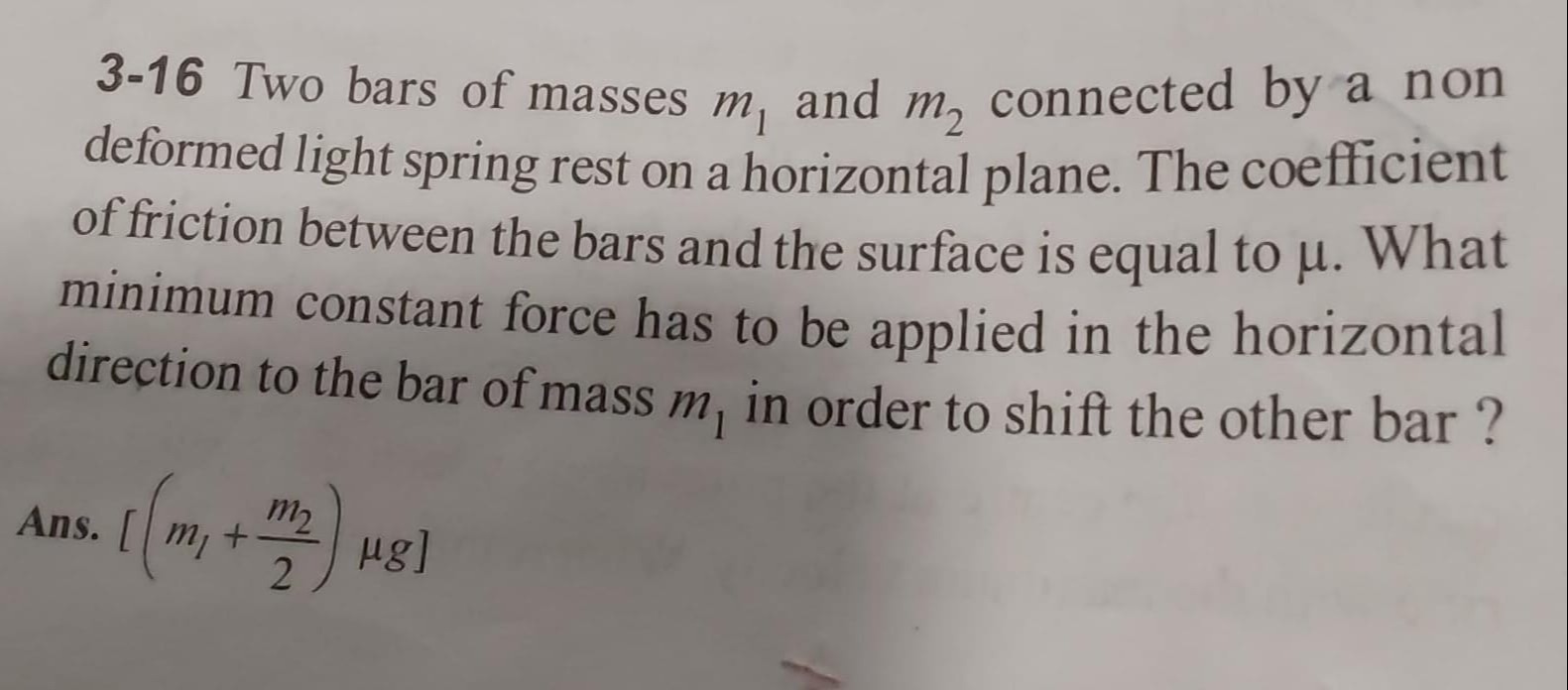Question
Question: Two bars of masses $m_1$ and $m_2$ connected by a non deformed light spring rest on a horizontal pla...
Two bars of masses m1 and m2 connected by a non deformed light spring rest on a horizontal plane. The coefficient of friction between the bars and the surface is equal to μ. What minimum constant force has to be applied in the horizontal direction to the bar of mass m1 in order to shift the other bar ?

[(m1+2m2)μg]
Solution
The problem states that two bars, m1 and m2, are connected by a light, non-deformed spring and rest on a horizontal plane with a coefficient of friction μ. We need to find the minimum constant horizontal force F applied to m1 that will cause m2 to shift.
For m2 to shift, the spring force (Fs) acting on it must overcome the maximum static friction force (fs2,max) acting on it. The maximum static friction on m2 is fs2,max=μN2=μm2g. Thus, for m2 to just begin moving, the spring force must be at least Fs=μm2g.
Now consider the forces acting on m1. The applied force F is to the right. The spring force Fs acts on m1 to the left (opposing the extension). The static friction force (fs1) on m1 also acts to the left, opposing the applied force F. The maximum static friction on m1 is fs1,max=μN1=μm1g.
The condition for m2 to start moving is Fs≥μm2g. The force balance on m1 at the point where m2 is about to move is F=Fs+fs1.
To find the minimum force F that causes m2 to shift, we consider the scenario where m1 is also at its limit of static friction, meaning fs1=fs1,max=μm1g. This ensures that m1 is capable of producing the necessary spring extension without accelerating significantly itself, or is on the verge of moving.
So, Fmin=Fs+fs1,max. The problem's provided answer is [(m1+2m2)μg]. If we assume this answer is correct, then: Fmin=μm1g+21μm2g. This implies that the required spring force to initiate the movement of m2 is Fs=21μm2g. However, the condition for m2 to shift is Fs≥μm2g. The derived spring force Fs=21μm2g is insufficient to move m2 according to standard physics principles.
There appears to be an inconsistency between the problem statement and the provided answer, as standard physics derivations lead to Fmin=μm1g+μm2g=μg(m1+m2).
Given the instruction to use the provided answer, we present it as is, acknowledging the discrepancy with standard physics. The answer suggests that the force required to stretch the spring to the point where m2 just starts to move is related to 21μm2g, which is not derivable from the problem as stated using conventional mechanics.
